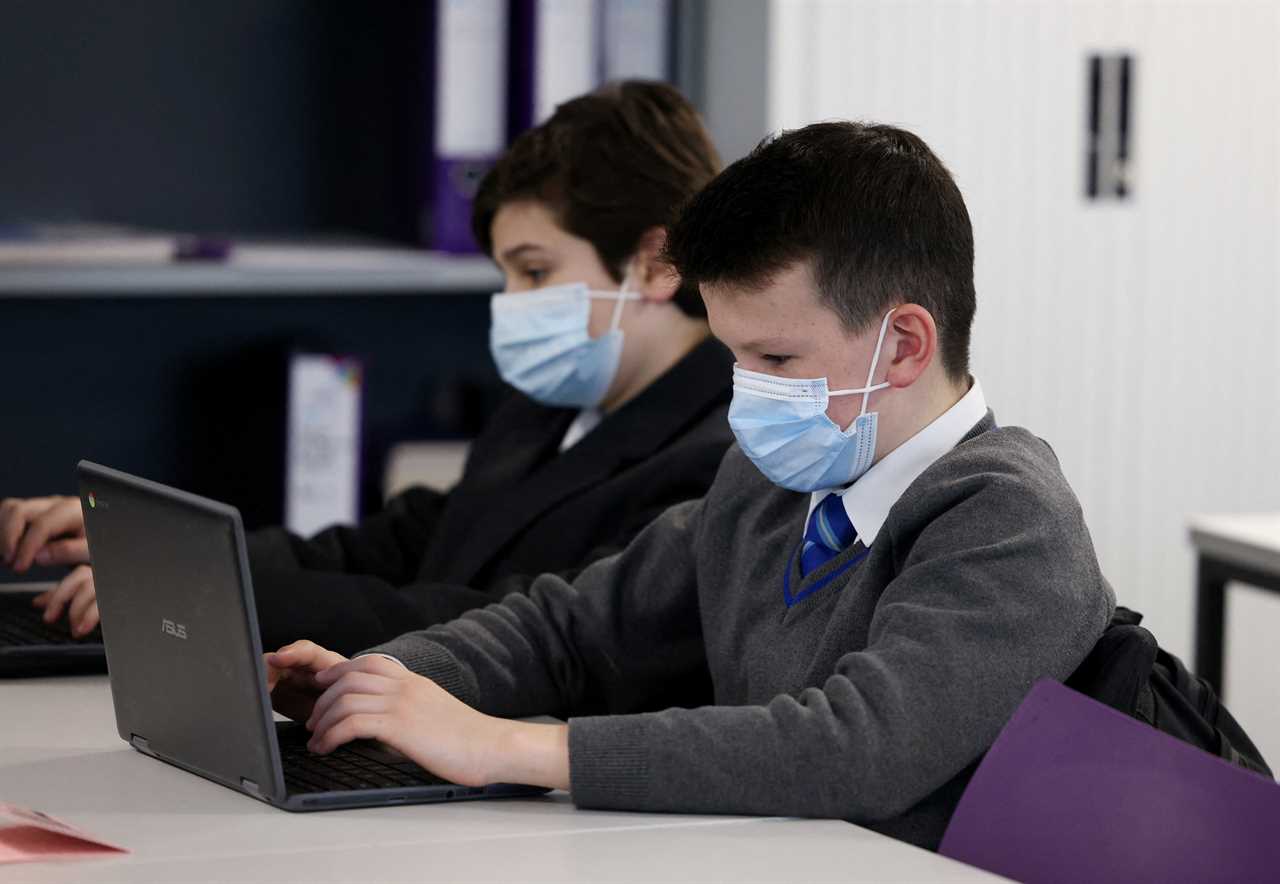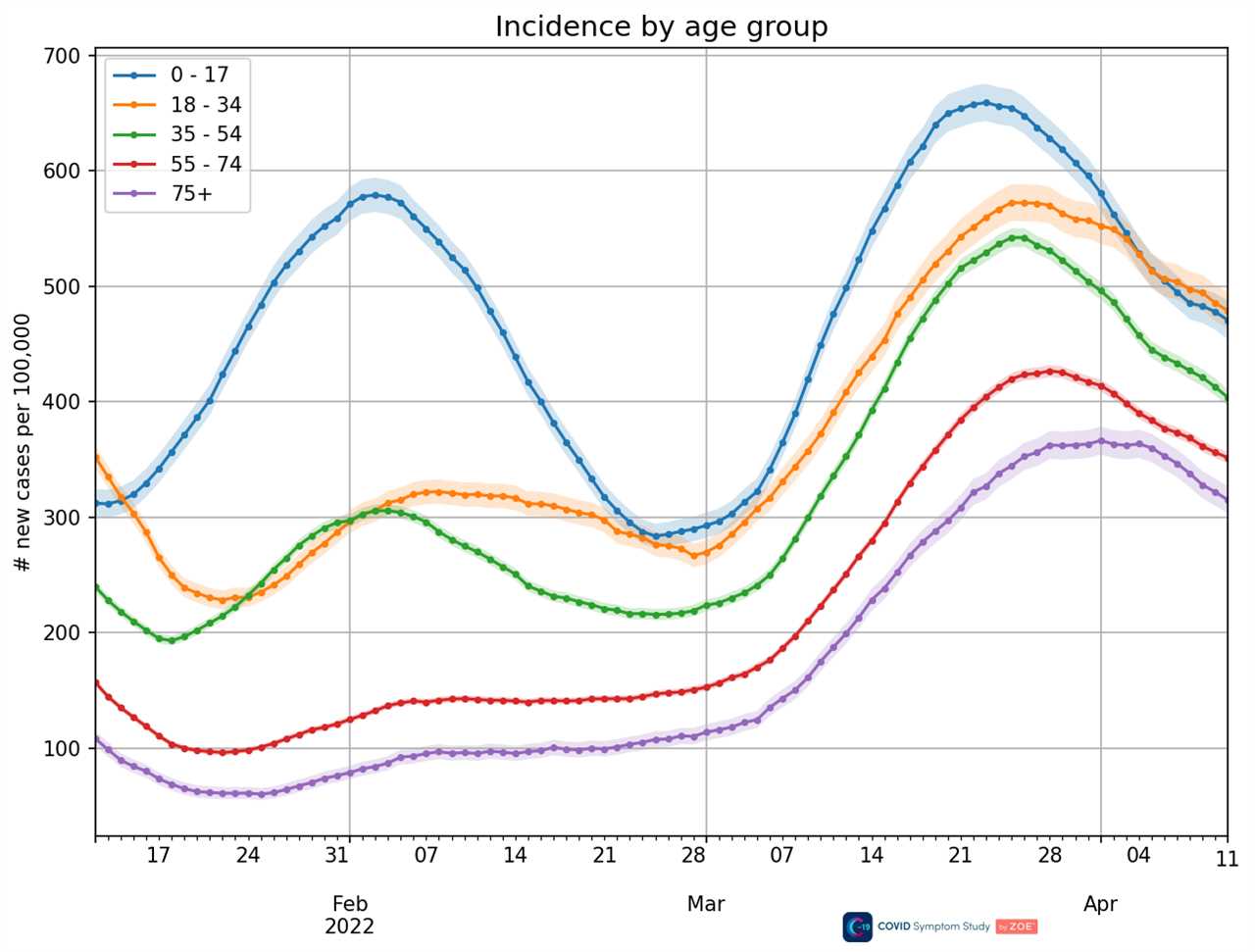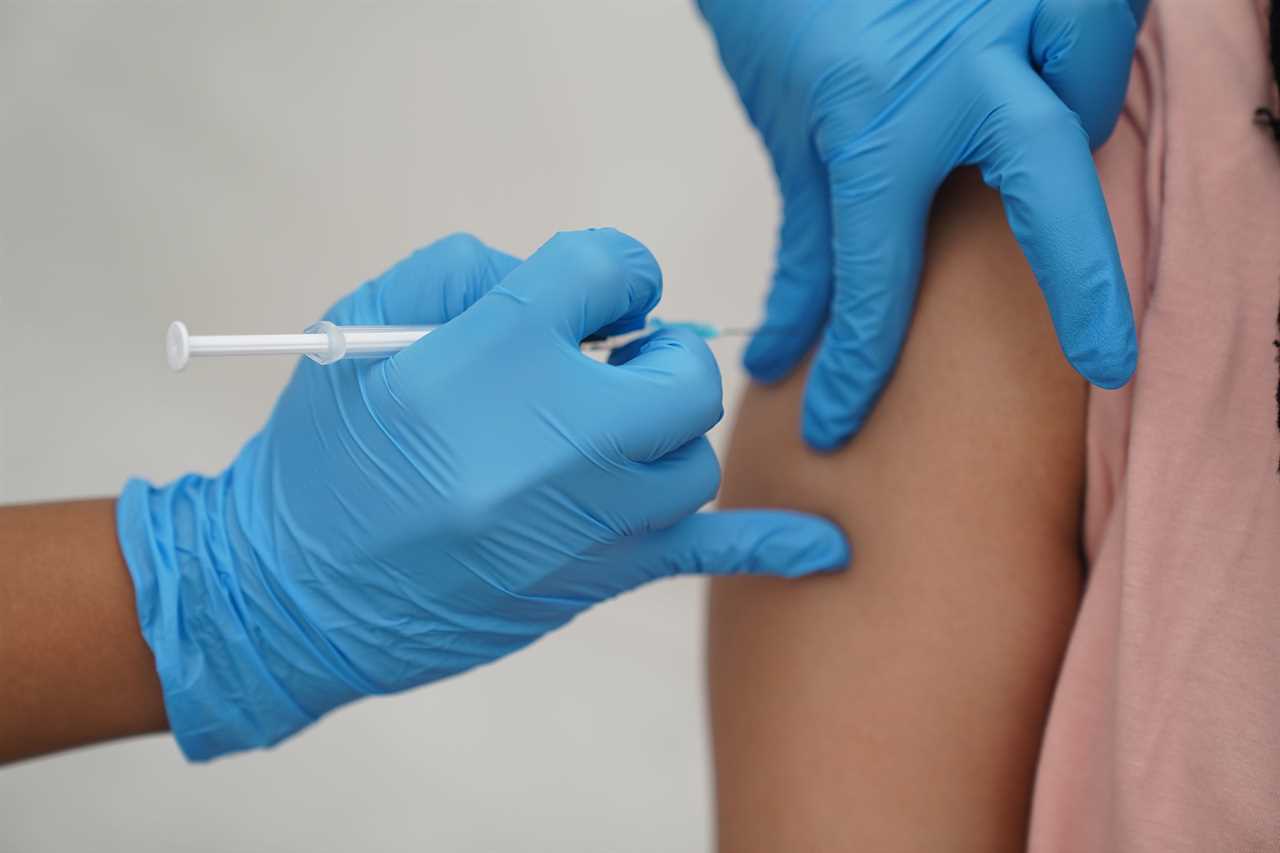COVID cases are coming down in all ages, data suggest, but experts say we are not quite “past the peak”.
The Easter holidays have allowed case rates in children to continue falling, with downward trends also seen in parents.


But the ZOE Covid Symptom Study app, which has been tracking the outbreak since 2020, said infections are still high.
It estimates 275,993 people are falling sick with symptomatic Covid every day in the UK.
Study lead Professor Tim Spector, of King’s College London, said: “Case numbers continue to decline and the rate is slightly faster than it was last week.
“We are seeing about a 12.5 per cent decrease compared to last week.
Read more on coronavirus
“This means the overall prevalence rate, the number of people around with Covid is still very high at one in 15.
“We are at last seeing a drop in the elderly groups, not only in the over 75s but in the over 55s.
“And with kids having a break from school, it’s possible that might help us as well, and children’s rates had started to plateau.
“In fact those kids are still the ones getting most infection, under 18s still have a risk of about one in 13 of Covid, so still a hell of a lot of this around.”
The bug reached highs in mid-March, when there were 650 new cases per 100,000 in under 18s.
The rate has fallen to around 475 per 100,000.
The Office for National Statistics (ONS) also reported the results of its weekly infection survey today, finding that the lowest rates of the virus are in the group year 7 to age 24 years.
Around one in 20 in this age group had Covid in the week ending April 9, which was not lower than the week prior.
Generally the ONS said the outbreak was receding across the UK, with 3.8 million people in England likely to have had coronavirus last week, down from 4.1 million in a week.
The fall suggests the recent surge in the virus, driven by the Omicron BA.2 variant, may have passed its peak.
But ONS’s Sarah Crofts said “it is too early to say if we have passed the peak of infections”.
Prof Kevin McConway, Emeritus Professor of Applied Statistics, The Open University, said he agreed, adding: “It’s concerning that the highest estimated rates of testing positive are in the two oldest age groups, 50-69 and 70+, where the estimated rate of testing positive was one in 14.
“Those groups, particularly the 70+ group, are considerably more likely to suffer serious illness if they get infected.
“Not at the rates that were seen before vaccination, but still high enough to cause some concern.
“So Covid-19 hasn’t gone away, and infections are still common.”
The ONS survey is more representative of the Covid outbreak than Government figures, which includes only those who have reported themselves as testing positive.
Just one in eight people newly infected with Covid are currently being logged in the Government total, ONS figures suggest.
The Government has reported 253,456 positive cases of the bug in the past seven days, including almost 36,000 yesterday.
Surprisingly, deaths soared with an extra 651 tragic fatalities logged – making it the highest figure in more than a year.
Wednesday’s figure included a number of deaths that weren’t in yesterday’s report, due to a delay.
Read More on Trending In The News
However, fatalities have almost hit 2,000 in the last seven days.
Deaths – and hospital admissions – always follow infection trends with a delay.










